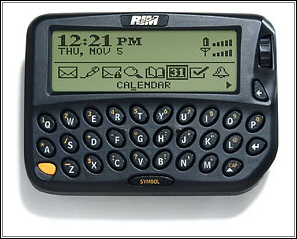We – me, certainly – think of myself as relatively immune to surprise, by evil or good. People say that it’s in the New York City Charter, right next to the rule about not being nice to tourists, lest we lose our municipal reputation for poor manners and indifference. But the right words still can, and should, have the power to move us – and founding documents often contain evidence of the best and worst of society. The United States Constitution, for example, was structured around giving slave-holding states a disproportionate amount of power (because of the Three-Fifths Compromise, and the undemocratic Senate, in which representation is distinctly undemocratic. Within the slave states, of course, individual slave-owners were free to treat their slaves as they wished, extracting as much economic value as was possible. And so among slave owners the economic incentive was a “race to the bottom.” ((We had thought that the phrase originated with Adam Smith, but further research suggests that first use may have been by Justice Louis Brandeis in Ligget Co. v. Lee (288 U.S. 517, 558–559) (1933). )) Yet, other parts of the body of the Constitution and Bill of rights bespeak noble and compassionate aims. And the absence of even a single use of the words “slave” or “slavery” are testimony that at least some of the Framers were opposed to, ashamed of, slavery.
And so with the United Nations: we can all bring to mind easily events in which the United Nations’ conduct – and even more often, cowardly inaction and silence doesn’t mean its existence hasn’t affirmatively led to good outcomes, and by creating channels for communication and temp0rizing – the latter being essential if the casus belli is in some part a politician with a bruised ego.
It is in this context that we present to you the Preamble of the founding Charter of the United Nations. It’s notable for many reasons but we think it worth pointing out that you can read this entire block of text from top to bottom, including the headings, or, you can read all the body copy as one statement, and read all of the headings, without reference to the text beneath each heading, as a separate complementary statement. Here it is:
PREAMBLE
WE THE PEOPLES OF THE UNITED NATIONS DETERMINED
- to save succeeding generations from the scourge of war, which twice in our lifetime has brought untold sorrow to mankind, and
- to reaffirm faith in fundamental human rights, in the dignity and worth of the human person, in the equal rights of men and women and of nations large and small, and
- to establish conditions under which justice and respect for the obligations arising from treaties and other sources of international law can be maintained, and
- to promote social progress and better standards of life in larger freedom,
AND FOR THESE ENDS
- to practice tolerance and live together in peace with one another as good neighbours, and
- to unite our strength to maintain international peace and security, and
- to ensure, by the acceptance of principles and the institution of methods, that armed force shall not be used, save in the common interest, and
- to employ international machinery for the promotion of the economic and social advancement of all peoples,
HAVE RESOLVED TO COMBINE OUR EFFORTS TO ACCOMPLISH THESE AIMS
Accordingly, our respective Governments, through representatives assembled in the city of San Francisco, who have exhibited their full powers found to be in good and due form, have agreed to the present Charter of the United Nations and do hereby establish an international organization to be known as the United Nations.
You can read the Preamble – and the nineteen chapters of the Charter – here on the site of the United Nations. And, if you think that world peace, social justice and economic fairness are worth discussing ((No sarcasm intended; thanere are people who believe, for instance, that we should let markets sort things for us, that collective efforts to improve things will only make things worse; those aren’t unreasonable positions, even if we don’t share them. The latter proposition is merely an application of Murphy’s Law to global matters. )), consider the proposition that a global language would be an affirmative step. We think it’s worth considering, even if it’s a limited language, and we don’t think the discussion begins or ends with Esperanto, and in fact even a limited vocabulary in a signed language, spoken by even a small number – say 2% – of each country’s population.
Brett Zamir, the brilliant creator of, among other things, at least 11 Firefox extensions – is owed our thanks for inspiring this post, is an advocate of the universal-language premise and an advocate of Gestuno, also known as International Sign. Brett, with permission “from the World Federation of the Deaf, [has] put online an early book on Gestuno,”
And if you’ve now got an appetite for founding documents, the Universal Declaration of Human Rights is a must-read.




